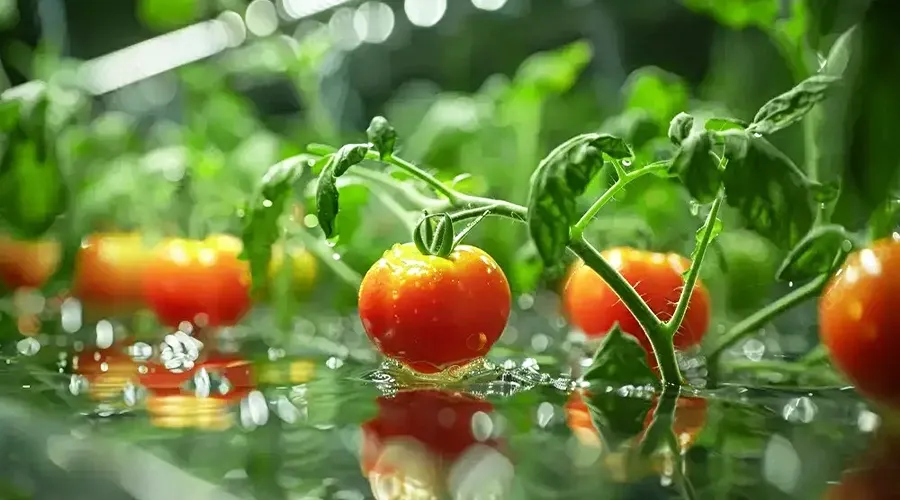- Get link
- X
- Other Apps
- Get link
- X
- Other Apps

I hope you’re all doing great. Today, I want to share the journey to hydroponic farming. Hydroponics is a method of cultivating plants without the use of soil, where the roots are suspended in a nutrient-enriched water solution to provide essential minerals for growth.
Controlled Environment Agriculture (CEA), also known as indoor vertical farming or climate-proof farming, is a method of growing plants indoors under carefully controlled conditions. This system protects crops from weather and ensures optimal light, temperature, and nutrients for growth.
An inspiring story in this field is that of Santosh Kumar, a passionate urban farmer from Thiruvananthapuram, Kerala, whose ingenuity has redefined rooftop farming in the city.
The Start of the Journey
Santosh Kumar's farming journey began on his terrace, aiming to grow fresh vegetables for his family. Initially, his agricultural experiments faced challenges due to limited space, pest problems, and the physical labor involved in traditional soil-based farming. This inspired him to explore a soil-less farming technique called hydroponics that promised better yields with fewer resources.
Taking inspiration from Kerala's rich tradition of innovation and his engineering background, Kumar designed a simple and effective hydroponic system that works well on city rooftops. His setup used PVC pipes, nutrient tanks, and vertical structures that could be adapted to different crops.
An environmental haven
Santhosh started conducting workshops and mentoring aspiring urban farmers in Thiruvananthapuram. His mission was simple, to empower households to grow their food sustainably. He adopted cutting-edge technologies, including automated systems for nutrient delivery and mobile apps to monitor crop health.
Growing crops in a controlled environment allows experts and advanced technology to carefully manage water, nutrients, and light, helping plants grow better. For example, sensors can track how much water and nutrients each plant uses or loses. With this, farmers can ensure maximum quantity and highest quality of produce by optimizing the timing, quality, and quantity of inputs to the plants.
This technology, along with smart irrigation, helps CEA farmers use up to 90% less water than traditional farms, cutting down water waste significantly. Hydroponic farms are much more water-efficient than traditional farming methods. LED lights replicate sunlight, helping plants to photosynthesize in indoor environments.
Challenges and innovation
Hydroponic farming offers many advantages, but it also presents a set of challenges. The renovation of a space for hydroponic farming involves costs for materials like LED lights, watering systems, plant racks, seeds, and climate control equipment. Additionally, there are expenses for labor and electricity to maintain the farm.
To address these, Santosh Kumar collaborated with local artisans to create affordable DIY hydroponic kits and partnered with IT professionals to simplify monitoring tools. His innovations also include solar-powered pumps to make hydroponic farming energy-efficient and resilient to power cuts, an important advancement for Kerala's rainy climate.
Inspiring the Future
Santosh Kumar's story reflects the growing global movement towards sustainable urban agriculture. By combining traditional agricultural values with modern technology, they have encouraged urban residents to grow their food and become more self-reliant. Their model shows that hydroponics is not just a farming method. It's a way to reimagine agriculture in a world where space and resources are limited.
As cities like Thiruvananthapuram grow, adding hydroponic farming to urban planning could help ensure food security, protect the environment, and empower communities. Santosh Kumar’s journey from growing plants on his terrace to becoming a leader in hydroponic farming shows how creativity and hard work can change the way we grow and think about food.
Farming is not about land; it is about love for nature and wanting to do something new. This technology serves as an inspiring example for those who want to build a green future, one roof at a time. If you too want to have a sustainable and innovative garden on your terrace then follow this guidance to grow your food in an eco-friendly way.
- Get link
- X
- Other Apps

Comments
Post a Comment